8.06.2025
Atlas V rocket to launch Amazon’s 2nd batch of Kuiper internet satellites on June 13
The mission will loft 27 more spacecraft to orbit.
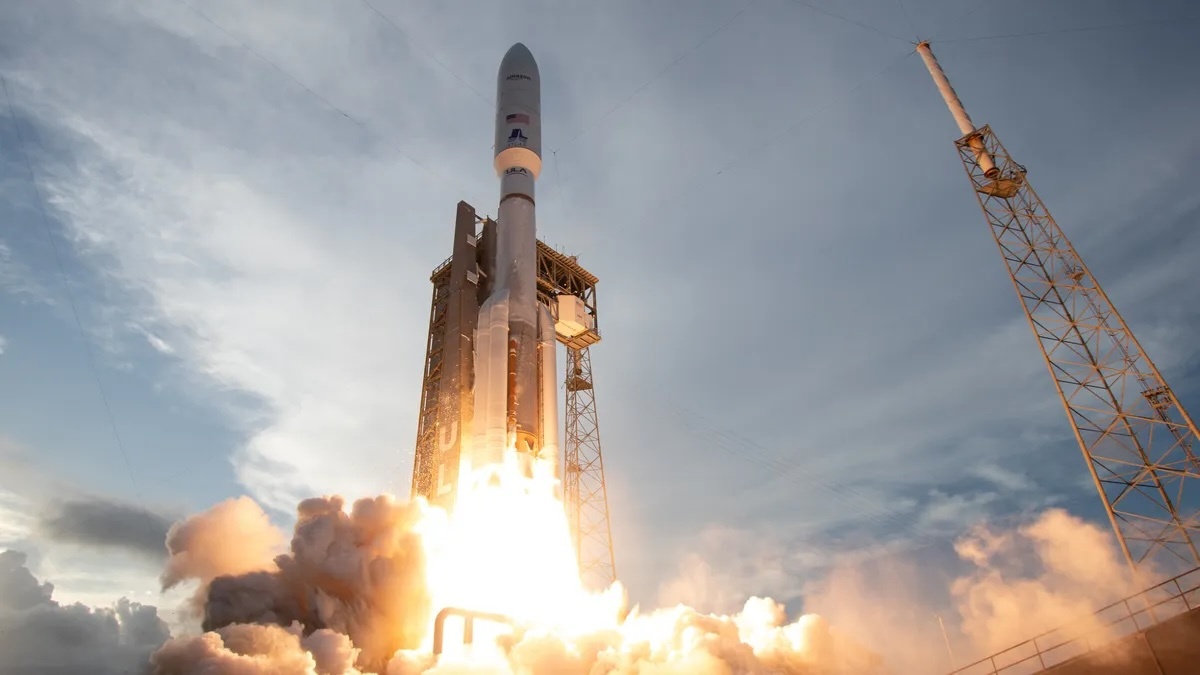
A United Launch Alliance Atlas V rocket launches the first 27 of Amazon's Project Kuiper internet satellites to orbit on April 28, 2025. (Image credit: United Launch Alliance)
Amazon's second fleet of internet satellites now has a target launch date.
The stack of 27 satellites, part of Amazon's Project Kuiper constellation, is scheduled to launch on a United Launch Alliance (ULA) Atlas V rocket next Friday (June 13).
Liftoff of the mission, known as Kuiper 2, is set for 2:29 p.m. EDT (1829 GMT), from Space Launch Complex-41 at Cape Canaveral Space Force Station in Florida, ULA announced.
Atlas V will launch the Kuiper satellites into low Earth orbit (LEO), where they will maneuver to join a small but growing constellation of satellites that will offer wireless, high-speed internet to customers within the fleet's range of operation.
The delivery of the Kuiper 2 satellites will double the size of Amazon's current constellation, to 54.
ULA launched the Kuiper 1 mission on April 28. The company called it a "new beginning" in a May 28 post that hinted that the launch date for Kuiper 2 was nearing.
Kuiper missions 1 and 2 are the first of 83 planned launches to help grow Amazon's Kuiper constellation. Not all of them will fly on the Atlas V, however; Amazon plans to launch batches of Kuiper satellites aboard ULA's new Vulcan Centaur rocket, Arianespace's Ariane 6 and Blue Origin's New Glenn.
The Project Kuiper constellation will eventually harbor more than 3,200satellites, if all goes according to plan. That will still be far fewer than SpaceX's rival Starlink broadband constellation, which already provides service to customers around the world. Starlink currently consists of more than 7,600 operational satellites, and it's growing all the time.
But Amazon's internet architecture differs from that of Starlink, so the company may not need to rival SpaceX in sheer satellite numbers to provide comparable service. Project Kuiper will combine its LEO constellation with a global network of ground stations and on-Earth infrastructure running Amazon Web Services, according to Amazon's website.
The engineers of Project Kuiper are also focused on sustainability. Kuiper satellites are designed to minimize the risk of orbital debris, the company says. They are also working with astronomers on ways to reduce the satellites' visibility and interference with astronomical research and general stargazing.
In a post on X announcing the Kuiper 2 launch date, ULA indicated that the mission was still pending range approval. The June 13 launch window for Atlas V opens at 2:29 p.m. EDT (1829 GMT) and will last for 30 minutes. If it's available, Space.com will stream the ULA launch for Amazon on our homepage, beginning shortly before liftoff.
Quelle: SC
----
Update: 18.06.2025
.
ATLAS V TO LAUNCH KUIPER 2
United Launch Alliance (ULA) will use its Atlas V rocket to deliver the second batch of Project Kuiper satellites into space for Amazon. Project Kuiper is Amazon's low Earth orbit satellite broadband network. Its mission is to provide fast, reliable internet to customers around the world, including those in unserved and underserved communities, using a constellation of more than 3,200 LEO satellites.
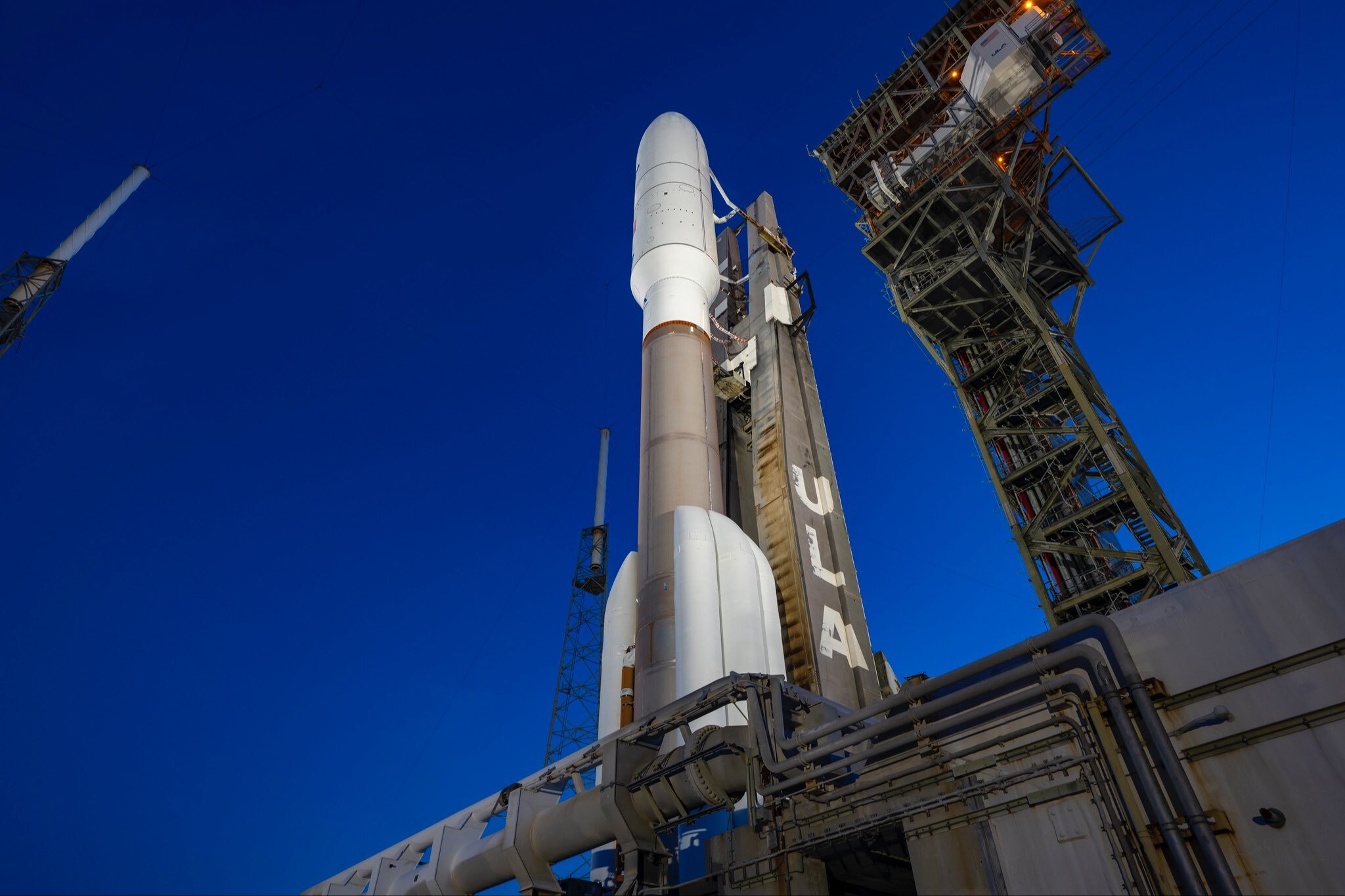
(Cape Canaveral Space Force Station, Fla., June 16, 2025) – The launch of a United Launch Alliance Atlas V 551 carrying Amazon’s second Project Kuiper mission, Kuiper 2, is delayed due to an engineering observation of an elevated purge temperature within the booster engine. The team will evaluate the hardware, and we will release a new launch date when available.
Quelle: ULA
----
Update: 23.06.2025
.
ULA's Amazon satellite launch now set for Monday liftoff at Cape Canaveral Space Force Station
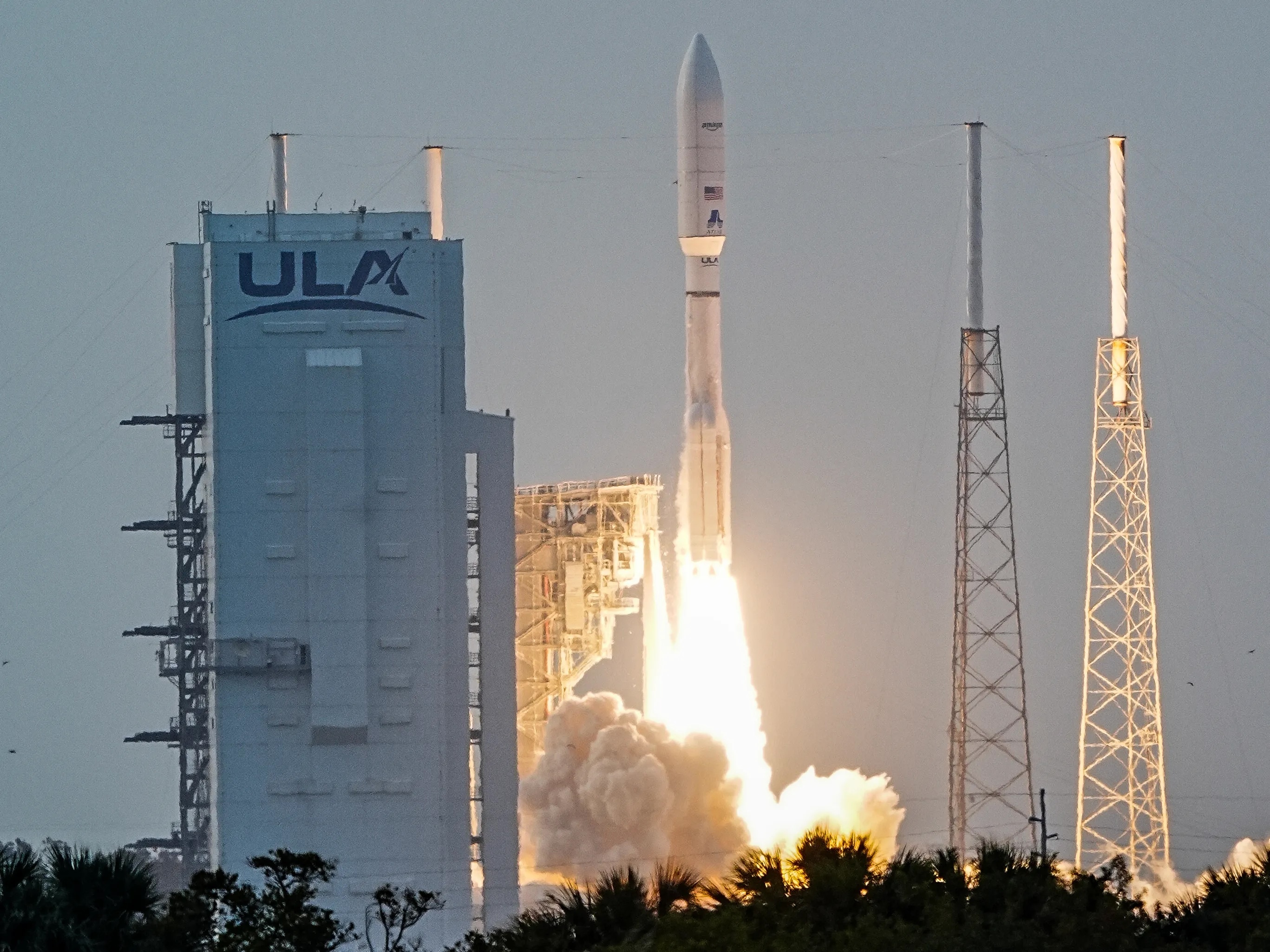
Take two: United Launch Alliance now aims to launch an Atlas V rocket on Amazon's second Project Kuiper broadband satellite mission at 6:54 a.m. Monday, June 23, seven days after a scrub.
Slotted to soar a half-hour after sunrise, the high-profile mission has a 30-minute window from Launch Complex 41 at Cape Canaveral Space Force Station.
What is Project Kuiper? It's Amazon's planned $10 billion constellation of 3,232 satellites to provide high-speed internet service around the world. ULA launched the ecommerce giant's first 27 production satellites on April 28 from the Space Force installation. This mission will add another 27 to the mix.
On Monday, June 16, ULA scrubbed the initial Project Kuiper 2 launch attempt about 35 minutes before liftoff, citing "an engineering observation of an elevated purge temperature within the booster engine." Technicians spent the past week working the issue.
Bolstered by five solid rocket boosters, the 205-foot Atlas V will fly to the northeast in its most powerful configuration.
ULA announced the forecast calls for 80% "go for launch" weather, with cumulus clouds posing a threat. The National Weather Service forecast calls for a slight chance of showers and thunderstorms Sunday night with mostly clear skies, an overnight low around 77 degrees, and east-southeast wind of 5 to 10 mph at Cape Canaveral Space Force Station.
In the years to come, ULA is slated to launch six more Atlas Vs and 38 Vulcan rockets on Project Kuiper satellite-deployment missions. In addition, Amazon is contracted for more than 30 missions with SpaceX, Blue Origin and Arianespace.
Amazon is wrapping up work on a $120 million, 100,000-square-foot satellite processing plant at the Launch and Landing Facility at NASA's Kennedy Space Center. An early $20 million site expansion includes a 42,000-square-foot flight hardware building.
Quelle: Florida Today
----
Update: 19:05 MESZ
.
ULA Amazon missions in Florida
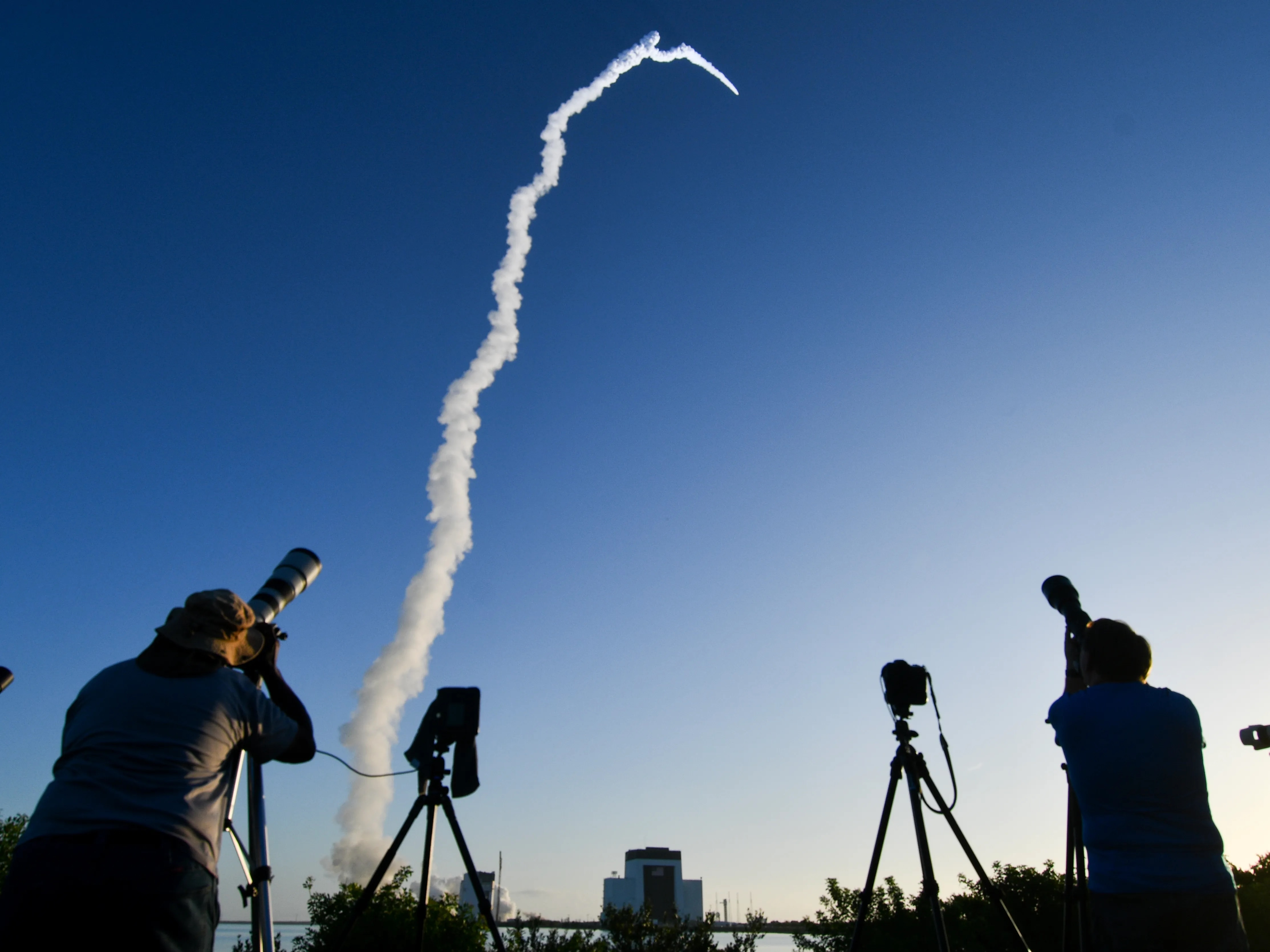
ULA Atlas V rocket launches Amazon Project Kuiper satellites at 6:54 a.m. Monday, June 23, from Cape Canaveral Space Force Station in Florida
Next, shortly after sunrise, ULA will launch an Atlas V rocket sporting five solid rocket boosters at 6:54 a.m. to deploy 27 Amazon Project Kuiper satellites. That rocket will lift off to the northeast from Launch Complex 41 at the Space Force installation.
The Space Force's 45th Weather Squadron predicted 85% odds for the Project Kuiper 2 mission. Cumulus clouds comprise the primary watch item.
Update 7:24 a.m.: ULA just tweeted this close-up video of this morning's Atlas V launch.
Atlas V stage separation, payload fairing jettison confirmed
Update 7 a.m.: ULA officials have confirmed the Centaur upper stage is continuing its ascent, propelling the Project Kuiper satellites into low-Earth orbit.
Liftoff!
Update 6:54 a.m.: Liftoff! ULA has just launched the Atlas V carrying 27 Project Kuiper satellites for Amazon from Cape Canaveral Space Force Station.
Atlas V rocket is deemed 'go for launch'
Update 6:49 a.m.: ULA managers just conducted a readiness poll — and the mission is "go for launch."
Liftoff is scheduled in five minutes.
ULA still on schedule for rocket liftoff
Update 6:42 a.m.: Four minutes ago, ULA tweeted this live update:
"Status continues to be green across the board. Weather remains in our favor this morning, no technical issues are being addressed with the launch vehicle or pad systems and we are on schedule for liftoff."
ULA's Amazon live video launch broadcast begins
Update 6:34 a.m.: ULA's live video launch broadcast is now embedded above, right below our countdown clock.
ULA: No technical issues 30 minutes before launch
Update 6:24 a.m.: ULA officials just shared this live countdown update:
"The sun is rising on a beautiful morning along the Space Coast of Florida. At daybreak today, we are about a half-hour away from our high-performance Atlas V 551 rocket heading to space carrying the next batch of Project Kuiper satellites. The launch team is not working any technical issues."
ULA's Atlas V rocket: A detailed view
Update 6:16 a.m.: ULA officials shared this cutaway view of the two-stage Atlas V configured for Amazon's Project Kuiper mission.
"The Atlas V 551 is the highest performance configuration of the rocket family with a full complement of five solid rocket boosters. It first flew in 2006 and has launched the New Horizons spacecraft to Pluto, the Juno orbiter to Jupiter, a variety of national security missions and Kuiper 1 on April 28," a ULA live update said.
Project Kuiper launch prep underway in Brevard
Update 6:06 a.m.: Brevard County Emergency Management officials have activated the agency's launch operations support team ahead of ULA's upcoming Atlas V launch.
Atlas V fully fueled and configured for Amazon flight
Update 5:56 a.m.: As the sun's rays illuminate Launch Complex 41, ULA announced the Atlas V is fully fueled and configured for the Project Kuiper liftoff.
Less than one hour remains before launch.
ULA CEO: 'Working no issues' with countdown
Update 5:45 a.m.: In a tweet, ULA President and CEO Tory Bruno announced crews are topping the Atlas V propellant tanks. Crews are working no issues. And "weather is holding and well within parameters."
"Topping mode" will boost the rocket's weight to 1.29 million pounds, ULA reported.
Amazon Project Kuiper explainer video
Update 5:35 a.m.: ULA officials just shared this video that explains Amazon's Project Kuiper high-speed satellite internet system.
ULA releases rocket launch visibility graphic
Update 5:20 a.m.: This ULA animated graphic depicts potential visibility for Atlas V launch spectators across much of the eastern United States, ranging from 30 seconds to 6½ minutes after liftoff along the ascending rocket's northeasterly flight path.
ULA launch update: 'We have a green board'
Update 5:05 a.m.: Details from a ULA live update, which was issued 11 minutes ago:
"The countdown is passing two hours until liftoff time. We will be taking the clocks down to T-minus 4 minutes where they will hold for 60 minutes while managers perform the final readiness polls," the update said.
"Fueling activities are progressing smoothly at Space Launch Complex-41. The Centaur liquid oxygen tank is full and we are continuing to load LOX on the Atlas stage and liquid hydrogen on Centaur," the update said.
"We have a green board with no issues being addressed by the ULA launch team and continue to target 6:54:30 a.m. EDT," the update said.
Space Force meteorologists watching for coastal showers
Update 4:50 a.m.: Weather balloons are being periodically released during the countdown to measure upper-level wind speeds and directions. Though the chance of "go for launch" weather remains 85%, technicians are wary of coastal showers drifting ashore over the pad.
"Coastal showers will be the main watch item for the initial launch window Monday morning with the Cumulus Cloud Rule the main concern," the 45th Weather Squadron forecast said.
For this afternoon, the National Weather Service warns Space Coast residents of heat index readings reaching 97 to 102 degrees, accompanied by a "very high" ultraviolet light index.
Atlas V rocket fueling underway at Cape
Update 4:35 a.m.: The Centaur upper stage's liquid-oxygen tank has reached the 75% level. This liquid oxygen is chilled to minus-298 degrees, ULA reported.
Meanwhile, the first-stage liquid-oxygen tank has reached the 40% level.
Quelle: Florida Today
+++
United Launch Alliance and Amazon Launch the Future of Global Connectivity
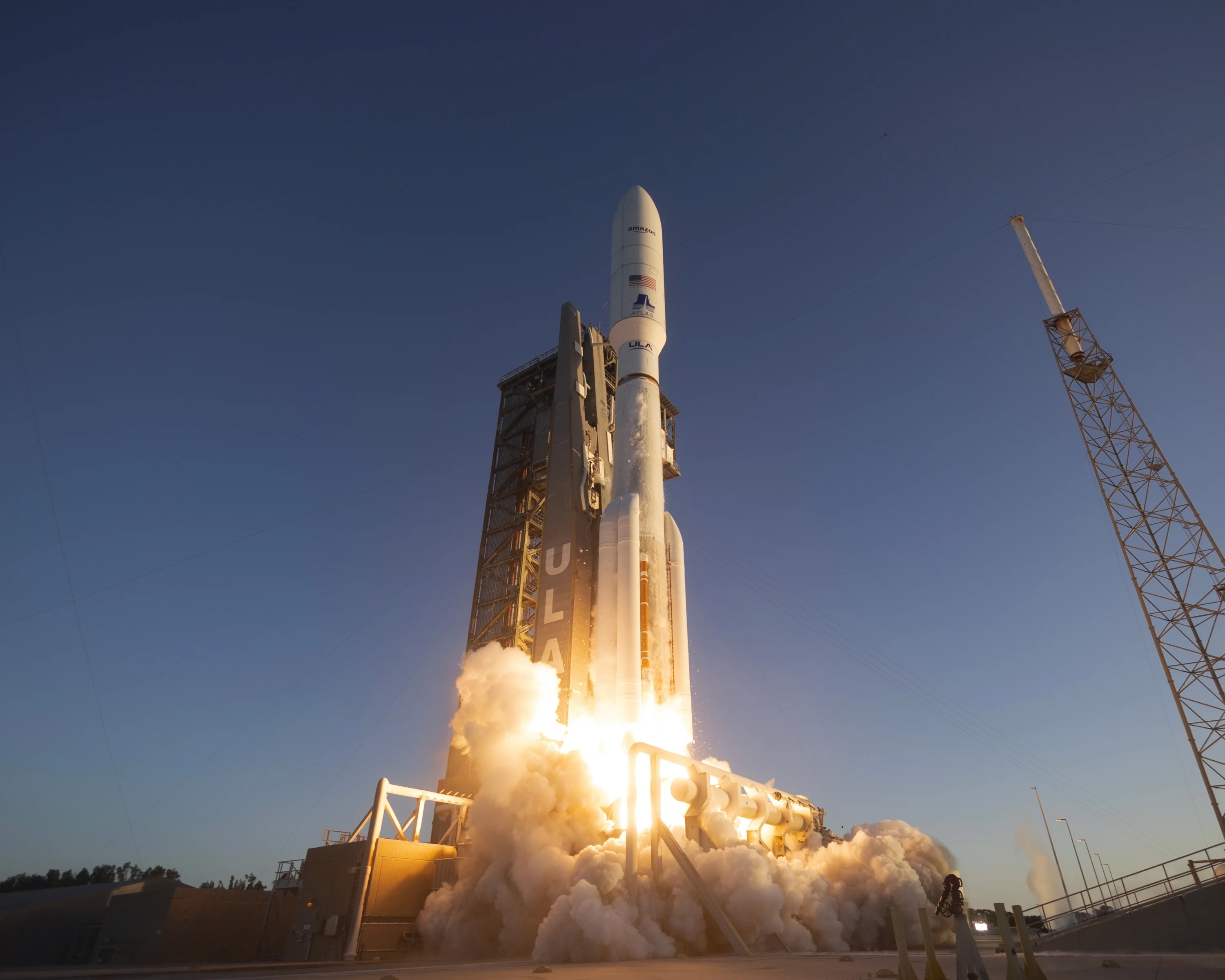
Cape Canaveral Space Force Station, Fla. (June 23, 2025) -- A United Launch Alliance (ULA) Atlas V rocket carrying the Kuiper 2 mission lifts off from Space Launch Complex-41 on June 23, 2025, at 6:54 a.m. EDT, delivering the future of global connectivity for Amazon
Atlas V precisely delivers second batch of operational broadband satellites for
Amazon’s Project Kuiper constellation
Cape Canaveral Space Force Station, Fla., (June 23, 2025) – A United Launch Alliance (ULA) Atlas V rocket carrying the Kuiper 2 mission for Amazon’s Project Kuiper lifted off on June 23 at 6:54 a.m. EDT from Space Launch Complex-41 at Cape Canaveral Space Force Station. This mission marks the next step in Amazon’s initiative to provide fast, reliable internet to customers around the world, including those in unserved and underserved communities.
“We are proud to continue our strong partnership with Amazon and empower their mission to bridge the digital divide through reliable satellite technology,” said Gary Wentz, ULA vice president of Government and Commercial Programs. “ULA, working as a catalyst to global connectivity in collaboration with Amazon, enables delivery of these critical satellites designed to drive innovation and connect the world.”
The Kuiper 2 launch deployed the second batch of operational Project Kuiper satellites into the intended orbit. There are six remaining Kuiper missions on the Atlas V rocket, building up to 38 high-cadence, rapid fire launches on the next-generation Vulcan rocket. ULA will deliver more than half of the Project Kuiper constellation’s 3,200 satellites, through the world’s largest commercial launch agreement.
ULA’s next launch is the first Vulcan mission for the U.S. Space Force, USSF-106.
__________________________________________________________________
For two decades, ULA has served as the custodian of America’s national security space mission. Our rockets fly to the most challenging and exotic orbits the nation requires, while delivering the most accurate payload insertions in the world. ULA continues to carry this unique capability forward with the new Vulcan rocket, the latest and most advanced vehicle of this type. Utilizing an innovative, modular architectural approach, Vulcan has expanded into the commercial LEO marketplace, providing efficient access to all orbits into the foreseeable future. With even more innovative technology on our horizon, the sky is definitely not the limit.
Quelle: ULA
